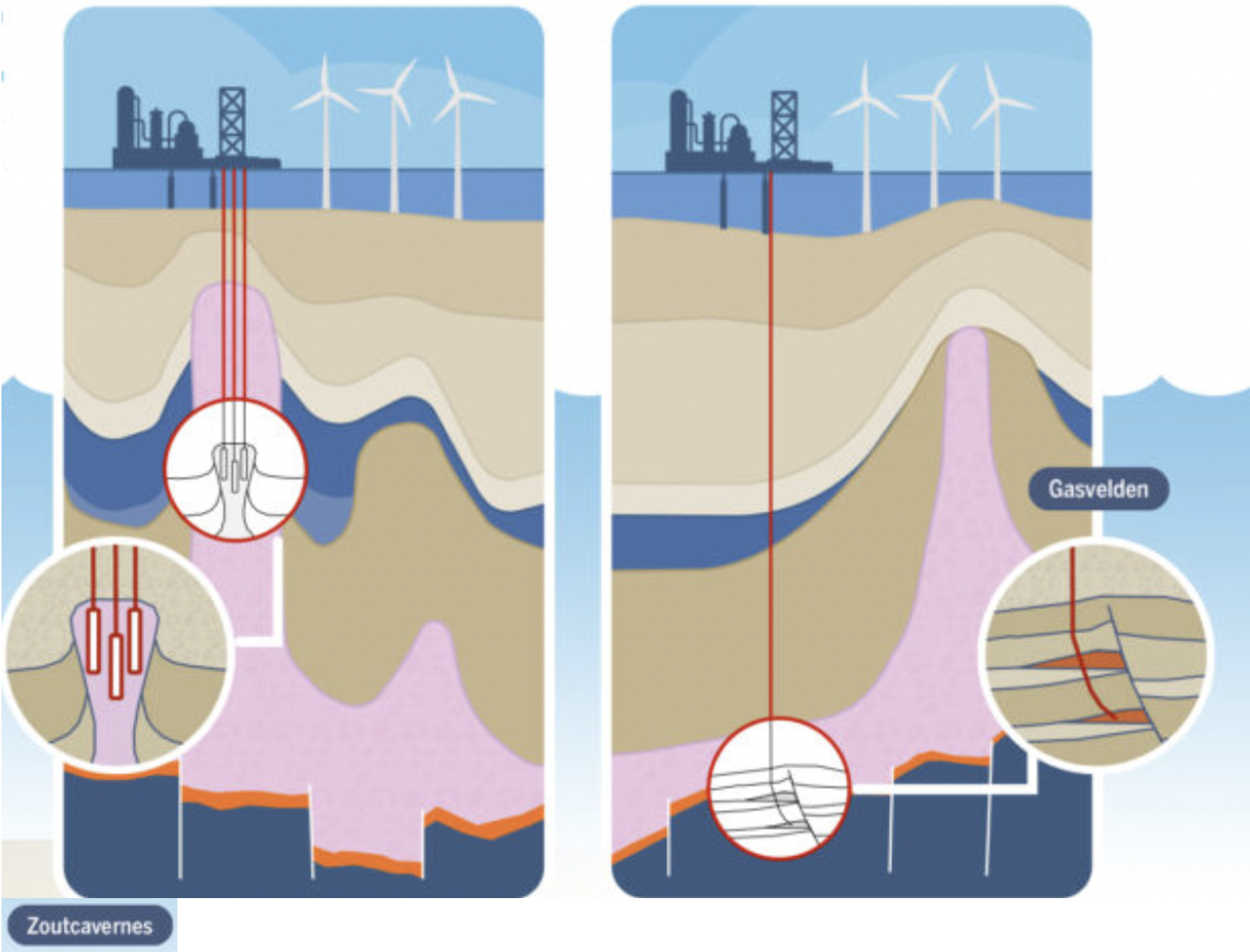
The underground storage of hydrogen at sea appears to be a technologically feasible and relevant option to include in the planning and construction of the energy system of the future. This is the key finding of a study by Energie Beheer Nederland (EBN) and the Netherlands Organization for Applied Scientific Research (TNO) into the feasibility of offshore underground hydrogen storage. This research was commissioned by the Dutch Ministry of Economic Affairs and Climate Change. However, a number of preconditions have to be met to roll out this kind of storage and further research is still needed, according to the two organizations in a joint press release.
The study constitutes an important first step when it comes to exploring possibilities for storing hydrogen underground in the Dutch part of the North Sea. In an earlier study (Underground Energy Storage in the Netherlands 2030-2050; Technical evaluation of supply and demand, 2021), TNO and EBN foresaw that between 2030 and 2050, once large-scale production and import of hydrogen is underway, the storage capacity of up to 4 salt caverns on land (currently envisaged for around 2030) will no longer be enough. Up until 2050, storage needs for hydrogen could be as high as 10 – 65 salt caverns and up to 5 gas fields, depending on various scenarios.

Salt caverns
The option of storing hydrogen in salt caverns has already been successfully ried and tested in projects in England and the United States. Under the North Sea, as well as underground onshore, there are several other salt structures that may be suitable for hydrogen storage. Exploratory research, including test drilling, is needed to confirm the potential for hydrogen storage at separate locations. One issue of concern is how to deal with the brine that is released during the construction of offshore caverns. This is because discharging brine is not permitted under current legislation. One option is to transport the released brine to land for further processing into industrial raw material.

Gas fields
There are numerous gas fields in the Dutch North Sea that could potentially be eligible for hydrogen storage. Most of these gas fields have already been developed and connected to a platform and natural gas infrastructure. However, the technical feasibility of hydrogen storage in gas fields has yet to be proven conclusively. In order to do this, EBN and TNO recommend researching the options and preconditions for a first pilot project for hydrogen storage in a gas field.
Costs
Underground hydrogen storage can serve several purposes, similar to natural gas storage: short-cycle storage (frequent injection and production over short periods of time of smaller volumes), seasonal storage (annual injection and production cycles over periods of weeks to months of large volumes), and strategic storage (static storage of large volumes of hydrogen, production only in the event of emergencies).
Follow-up steps
Consequently, there do not seem to be any overall showstoppers for offshore hydrogen storage ahead of time, other than possible showstoppers that also play a role in land-based construction. However, significant development lead times of 10 to 15 years must be taken into account for the development of underground hydrogen storage at sea. Which means that if the first such storage is to be available soon after 2030, follow-up steps will need to be taken in the short term.
Selected for you!
Innovation Origins is the European platform for innovation news. In addition to the many reports from our own editors in 15 European countries, we select the most important press releases from reliable sources. This way you can stay up to date on what is happening in the world of innovation. Are you or do you know an organization that should not be missing from our list of selected sources? Then report to our editorial team.






